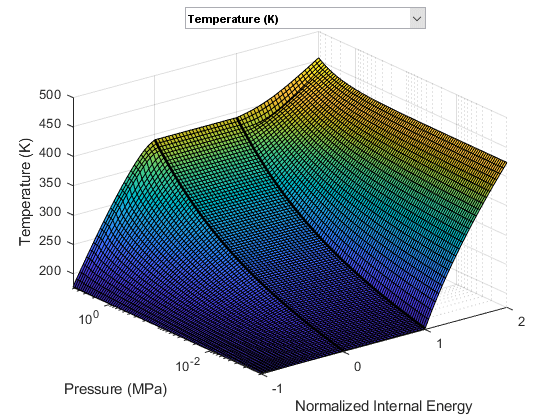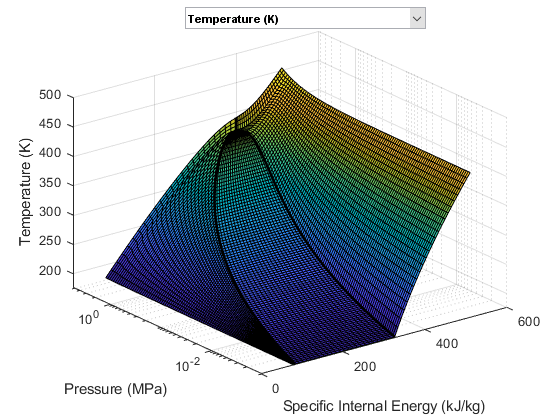两相流体制冷
此示例使用两相流体组件对蒸气压缩制冷循环进行建模。压缩机驱动 R-134a 制冷剂通过一个冷凝器、膨胀阀和蒸发器。离开压缩机的热气体通过向环境传递热量在冷凝器中冷凝。当制冷剂通过膨胀阀时,压力会下降。压力下降会降低制冷剂的饱和温度。这使它在从冷藏室吸收热量时在蒸发器中沸腾。然后,制冷剂会返回压缩机以重复该循环。控制器会打开和关闭压缩机,以将冷藏室温度维持在所需温度的频带范围内。
模型
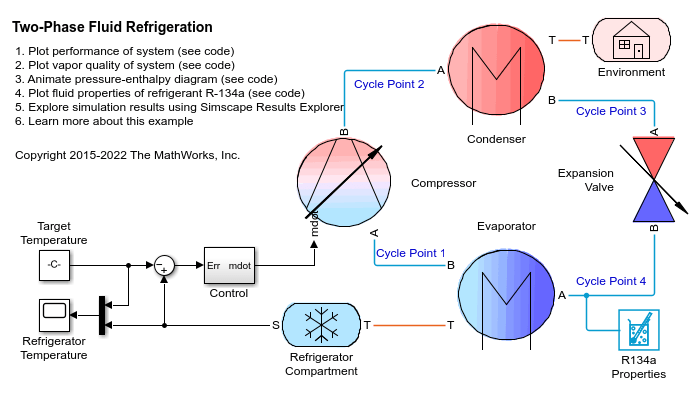
来自示波器的仿真结果
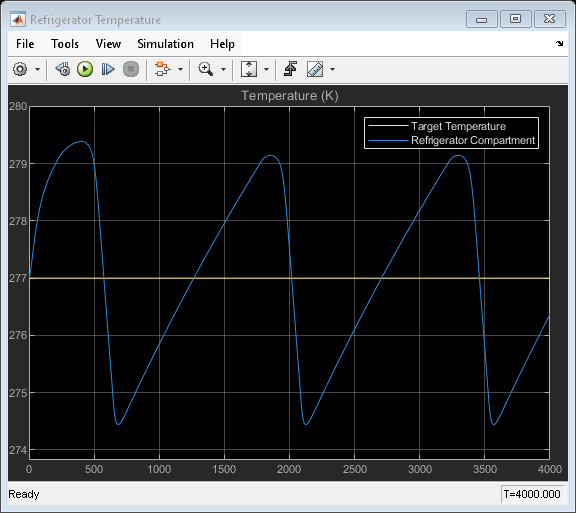
来自 Simscape 记录的仿真结果
下图绘制了制冷循环性能随时间变化的情况,包括压力、温度、能量流和质量流。图中表明,此制冷循环在压缩机压力比约为 5.5 的情况下运行。性能系数(即排出的热量与压缩机输入功率之比)约为 4。

下图绘制了制冷循环四个点中每点处的蒸气质量。图中表明,当压缩机开启时,蒸发器从冷藏室吸收足够的热量,使制冷剂完全气化。然后,冷凝器将蒸气质量降至 0.02 左右。闪蒸发生在膨胀阀中,使得制冷剂以约 0.4 的蒸气量进入蒸发器。

Simscape 记录结果的动画形式
下图展现了制冷循环中流体状态随时间的演变。制冷循环的四个点(压缩机入口、冷凝器入口、膨胀阀入口和蒸发器入口)绘制在压力-焓图上。虚等高线表示温度,灰色曲线表示饱和圆顶。
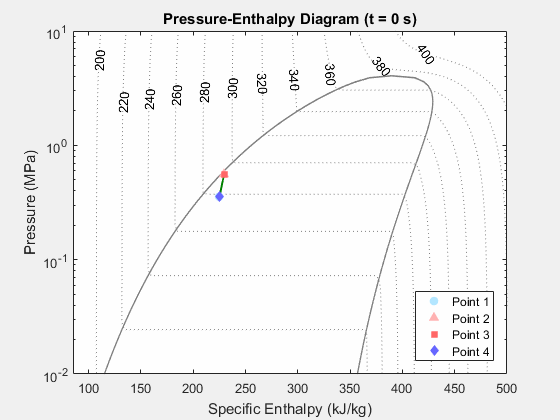
流体属性
下面两幅图绘制了制冷剂 R-134a 的流体属性分别随压力 (p) 和比内能 (u) 以及随压力 (p) 和归一化内能 (unorm) 的变化。情况如下:
当 -1 <= unorm < 0 时,液体为过冷液体;
当 0 <= unorm <= 1 时,流体为两相混合流体;
当 1 <= unorm <= 2 时,流体为过热蒸气;
流体属性数据以 p 和 unorm 表示的矩形网格提供。因此,以 p 和 u 表示的网格是非矩形的。
可以在 r134aPropertyTables.mat 中找到 R-134a 流体属性。
